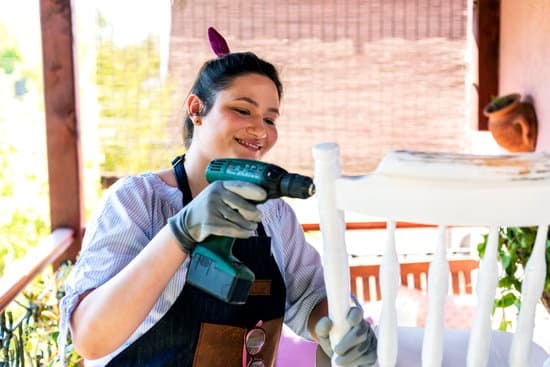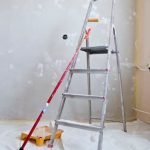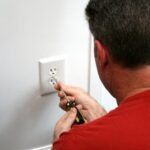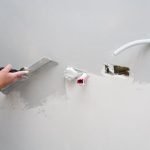The home improvement industry faces several challenges in today’s rapidly changing market. From economic fluctuations and rising competition to environmental regulations and changing consumer demands, the industry is constantly evolving. Understanding these challenges is crucial for businesses to adapt and thrive in this competitive landscape.
One of the key challenges that the home improvement industry faces is the impact of economic fluctuations. As the economy goes through ups and downs, consumer spending on home improvement projects tends to fluctuate as well. This uncertainty can make it difficult for businesses to forecast demand and plan for future growth.
Additionally, the industry is experiencing a rise in competition and a lack of differentiation in the market. With an increasing number of players vying for a share of the market, businesses must find unique ways to stand out and distinguish themselves from their competitors.
Environmental regulations and sustainability issues also pose significant challenges for the home improvement industry. As consumers become more environmentally conscious, they are seeking products and services that align with their values. Businesses must navigate these regulations while finding sustainable solutions to meet consumer demands.
Overall, understanding these challenges is essential for businesses in the home improvement industry to find ways to address them effectively. By staying ahead of economic trends, differentiating themselves in a crowded market, and adapting to changing consumer preferences, businesses can overcome these challenges and capitalize on opportunities for growth.
The Impact of Economic Fluctuations on the Home Improvement Industry
The home improvement industry often finds itself at the mercy of economic fluctuations, which can have a significant impact on the overall performance of the sector. When the economy is thriving, homeowners are more likely to invest in remodeling and renovation projects, leading to an increase in demand for home improvement products and services.
Conversely, during economic downturns, consumers tend to tighten their belts and postpone discretionary spending, including home improvement projects. This creates a challenge for businesses within the industry as they struggle to maintain profitability and sustain growth during these uncertain times.
For example, data from the Joint Center for Housing Studies of Harvard University shows that spending on home improvements tends to be closely correlated with changes in existing home sales, which are themselves highly influenced by fluctuations in the broader economy. During periods of economic stability and growth, homeowners are more willing to invest in upgrading their properties. In contrast, during economic recessions or periods of uncertainty, consumer confidence wanes, leading to a decline in home improvement expenditures.
Moreover, according to a report by Statista, the United States has experienced various economic downturns over the past few decades – such as the dot-com bubble burst in 2000-2001 and the global financial crisis in 2008-2009 – all of which had a substantial impact on consumer spending behavior. As such, it is essential for businesses operating within the home improvement industry to develop resilience strategies that enable them to navigate through these challenging economic cycles.
| Economic Indicator | Impact on Home Improvement Industry |
|---|---|
| Home Sales | Directly influences spending on remodeling and renovation projects |
| Gross Domestic Product (GDP) | Affects consumer confidence and willingness to invest in home improvements |
| Unemployment Rate | Influences disposable income available for home improvement projects |
The Rising Competition and Lack of Differentiation in the Market
The home improvement industry is facing a significant challenge due to the rising competition and lack of differentiation in the market. With an increasing number of players entering the industry, it has become more difficult for businesses to stand out and offer unique value propositions to consumers. As a result, companies are finding it challenging to attract and retain customers, leading to price wars and reduced profit margins.
To address this challenge, home improvement businesses must find ways to differentiate themselves from the competition. One approach is by offering specialized services or products that cater to specific consumer needs. For example, some companies may focus on eco-friendly and sustainable home improvement solutions, while others may specialize in high-end luxury renovations. By carving out a niche in the market, businesses can target specific customer segments and build a more loyal customer base.
Another strategy for overcoming the lack of differentiation in the market is through effective branding and marketing efforts. Businesses can create a strong brand identity that resonates with their target audience, making them stand out from competitors. This includes developing compelling marketing messages, establishing a unique visual identity, and leveraging digital channels to reach potential customers.
Moreover, fostering innovation within the organization can also help companies differentiate themselves from competitors. This could involve investing in research and development to create new products or services that address unmet consumer needs or enhance existing offerings. By continuously innovating, businesses can stay ahead of the competition and maintain relevance in a rapidly evolving market.
- Implement targeted marketing campaigns
- Offer specialized services or products
- Foster innovation within the organization
Environmental Regulations and Sustainability Issues
The home improvement industry is facing a significant challenge when it comes to environmental regulations and sustainability issues. With an increasing focus on environmental conservation and sustainable practices, the industry is under pressure to adopt eco-friendly materials and methods. This shift towards sustainability not only impacts the products used in home improvement projects but also affects the processes and waste management practices within the industry.
One of the main concerns for the home improvement industry is ensuring compliance with environmental regulations while still meeting consumer demands. As more consumers look for environmentally friendly options for their home improvement projects, companies in the industry are forced to rethink their supply chains, production processes, and waste disposal methods. This can lead to increased costs and operational challenges as companies navigate the changing landscape of environmental regulations.
Furthermore, sustainability issues such as carbon footprint reduction and energy efficiency are becoming key considerations for both businesses and consumers in the home improvement sector. Companies must find ways to incorporate sustainable practices into their business models while effectively communicating these efforts to their target market. This requires innovation and investment in research and development to create new, sustainable solutions that meet both regulatory requirements and consumer preferences.
Changing Consumer Demands and Preferences
Consumer demands and preferences play a significant role in shaping the home improvement industry. As the tastes and preferences of consumers evolve, so do the products and services offered by home improvement businesses. One of the challenges that the home improvement industry faces is keeping up with these changing demands while also staying ahead of the competition.
In recent years, there has been an increasing focus on sustainable and environmentally friendly home improvement products. Consumers are now more conscious about their environmental impact, leading to a growing demand for eco-friendly materials and energy-efficient appliances. This shift in consumer preferences has forced many businesses within the home improvement industry to invest in sustainable practices and offer green alternatives in order to remain competitive in the market.
Another aspect of changing consumer demands is the rise of smart technology in homes. Home automation, energy management systems, and smart appliances are becoming increasingly popular among homeowners. Companies in the home improvement sector must adapt to this trend by offering products and services that cater to these technological advancements, presenting another challenge for the industry as a whole.
Overall, understanding and responding to evolving consumer demands and preferences is crucial for businesses in the home improvement industry if they wish to thrive in an increasingly competitive market.
| Challenge | Impact |
|---|---|
| Environmental Regulations | Requirement for eco-friendly materials |
| Technology Advancements | Incorporation of smart home solutions |
The High Costs of Materials and Labor
Equilibrium Between Supply and Demand
One of the challenges that the home improvement industry faces is the high costs of materials and labor. The prices of raw materials such as lumber, steel, and copper have been fluctuating due to supply chain disruptions, trade tensions, and environmental regulations.
This leads to increased production costs for manufacturers, ultimately affecting the prices that consumers pay for home improvement products. Similarly, the shortage of skilled labor in construction and contracting has resulted in higher wages and labor costs, making home improvement projects more expensive for homeowners.
Strategies for Cost Control
To combat these challenges, companies in the home improvement industry must find ways to control their costs without compromising on quality. This may involve renegotiating contracts with suppliers, finding alternative materials that are more cost-effective, or investing in automation and technology to improve efficiency and reduce labor costs. Additionally, businesses can explore partnerships with trade schools or apprentice programs to cultivate a pipeline of skilled workers.
Impact on Consumers
For consumers, the increasing costs of materials and labor pose a barrier to entry for undertaking home improvement projects. Many homeowners may delay or cancel renovations or repairs due to budget constraints, impacting the overall demand for products and services in the industry. As a result, businesses must carefully consider pricing strategies and value propositions to remain competitive while still maintaining profitability amidst these cost challenges.
Technology Adoption and Adaptation in the Home Improvement Industry
The home improvement industry is facing a number of challenges, with one of the most pressing being the need to adopt and adapt to new technologies. In today’s digital age, consumers are increasingly looking for convenience, efficiency, and innovation when it comes to improving their homes. This has put pressure on businesses in the industry to embrace technology in order to stay competitive and meet the changing demands of their customers.
To address this challenge, home improvement companies can consider implementing the following technological solutions:
- Integrating augmented reality (AR) and virtual reality (VR) tools into their sales process to allow customers to visualize products and designs before making a purchase.
- Utilizing project management software to streamline operations, improve communication between teams, and track progress more effectively.
- Developing mobile apps that provide customers with easy access to product information, design inspiration, and real-time updates on their home improvement projects.
By leveraging these technological advancements, companies in the home improvement industry can not only enhance the overall customer experience but also improve efficiency and productivity within their own operations.
Additionally, embracing technology can also help home improvement businesses differentiate themselves from competitors in a saturated market. Those who are able to successfully integrate digital solutions into their business model will be better positioned to attract and retain customers who are seeking innovative and modern approaches to home improvement. Embracing technology is no longer just an option for businesses in this industry – it has become a necessity for long-term success.
The Importance of Skilled Labor in the Home Improvement Industry
The home improvement industry relies heavily on skilled labor to carry out various construction and renovation projects. Skilled labor encompasses a wide range of professionals, including carpenters, electricians, plumbers, HVAC technicians, and masons, among others. These individuals play a crucial role in ensuring that home improvement projects are completed to the highest standards of quality and safety.
Meeting the Demand for Skilled Workers
One of the major challenges that the home improvement industry faces is the shortage of skilled labor. As older workers retire, there is a significant gap in the number of younger individuals entering the skilled trades.
This shortage can lead to delays in project completion, compromised workmanship, and increased costs for consumers. To address this challenge, industry stakeholders must work together to attract more individuals to pursue careers in the skilled trades and provide them with the necessary training and education.
Training and Development Programs
In response to the shortage of skilled labor, many companies in the home improvement industry are investing in training and development programs for their employees. These programs not only help address the current shortage but also ensure that workers have up-to-date skills and knowledge to meet evolving industry demands. By providing ongoing training opportunities, companies can retain their workforce and enhance their capabilities in delivering high-quality services to clients.
Raising Awareness of Career Opportunities
Another important aspect of addressing the importance of skilled labor in the home improvement industry is raising awareness of career opportunities within the skilled trades. Many individuals may not be aware of the diverse roles available or the potential for career advancement within these fields. By promoting these opportunities through educational institutions, vocational training programs, and outreach initiatives, it is possible to attract more talent into the industry while meeting its growing demand for skilled workers.
Conclusion
In conclusion, the home improvement industry is facing a myriad of challenges that require innovative solutions and strategic planning. Economic fluctuations have a significant impact on consumer spending in the home improvement sector, making it essential for businesses to adapt to changing market conditions. The rising competition and lack of differentiation in the market add additional pressure for companies to find unique ways to stand out and attract customers.
Environmental regulations and sustainability issues also present a considerable challenge for the home improvement industry. With increasing awareness of environmental concerns, consumers are seeking eco-friendly and sustainable options, prompting businesses to integrate environmentally responsible practices into their operations. Furthermore, changing consumer demands and preferences, along with the high costs of materials and labor, create a complex landscape that requires careful navigation.
Despite these challenges, there are opportunities for growth and success in the home improvement industry. Technology adoption and adaptation offer new possibilities for streamlining processes and enhancing customer experiences. Additionally, recognizing the importance of skilled labor in delivering quality services is crucial for maintaining a competitive edge in the market. By addressing these challenges proactively and embracing emerging opportunities, businesses can position themselves for long-term success in the dynamic home improvement sector.
Frequently Asked Questions
What Is the Future of the Home Improvement Industry?
The future of the home improvement industry looks promising, with a growing demand for sustainable and energy-efficient products. Smart home technology integration is also expected to be a significant trend, allowing homeowners to control various systems and devices remotely.
How Big Is the Home Improvement Industry in the US?
The home improvement industry in the US is substantial, with billions of dollars in annual revenue. As more homeowners prioritize renovations, repairs, and upgrades, the industry continues to grow, offering various opportunities for businesses and professionals.
What Is the Home Improvement Market?
The home improvement market encompasses all products and services related to enhancing residential properties. This includes everything from DIY tools and materials to professional contractors providing remodeling, landscaping, and other renovation services. With an increasing focus on sustainability and technology, the market is evolving to meet consumer demands for eco-friendly and efficient solutions.

I’m thrilled to have you here as a part of the Remodeling Top community. This is where my journey as an architect and remodeling enthusiast intersects with your passion for transforming houses into dream homes.





